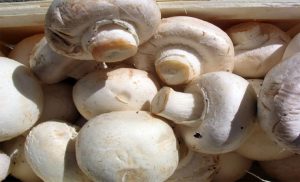Motherhood is something that comes naturally to a woman. No matter how lazy, clumsy or disgruntled a woman might be after motherhood she will learn ways to handle her baby with utmost care and affection. A baby is not only a small human being and is your reflection in many ways, but is certainly having a personality of its own right from the very beginning.
It is not only hard to handle that tiny attitude filled creature but it is also quite a task to mould them according to your needs and thoughts. But it is all in a mother’s affection that a child always finds comfort in her lap even if she scolds them for doing something wrong.
Right from the birth and the time the baby hops onto breast feed or top feed the time period from them onwards is continuously changing and the mother has to learn a lot of things and that too at a rapid speed. Food is one of the essentials that a mother needs to get accustomed too in a short while post child birth.
All the experienced women in the family are there to help but since discussed before a child has its own personality and therefore it cannot really be predicted if the baby is allergic or intolerant to a substance. Therefore, special care must be taken while introducing new foods into your baby’s diet. This post is therefore formulated for the lovely and bright mothers who are about to go into those tensed days trying to figure out what their babies like and what they don’t and how to feed them that food, anyhow.
Stage One
The stage one is the time period between 4-6 months of the baby’s growth. This stage is the most important because this is when the baby is finally starting to eat something other than milk. Some mothers also believe that it is very important to consider taste building at this stage because most kids who start eating sweet foods are often very reluctant to try any food with salts or no taste at all. My mother suggested my married sister with a new born to first introduce a completely tasteless soft food to the baby and that too for a week and then go for something either sweet or salty as this is will then give you the liberty to try different foods with the kid.
- Important is that the foods in the stage 1 need to be thoroughly verified and also consulted with the pediatrician.
- The food has to completely pureed and also a little runny, better not to keep anything too grainy for the child’s sake.
16. Sweet Potato Puree
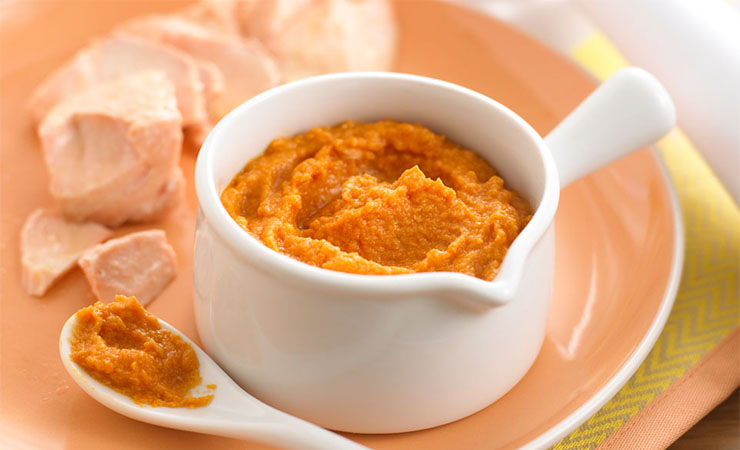
Sweet potatoes are one of the best bets when it comes to introducing solid foods to the child’s diet. Nature’s best way of telling how blessed Mom’s are because if it wasn’t for sweet potatoes kids would have been over the hill demanding that wouldn’t have been possible for mothers to produce, otherwise.
Technique
- The way to prepare sweet potato puree is really easy.
- All it requires is that you take a normal sized sweet potato; peel it and then boil it in a cup of water.
- The idea is to boil the potato to such an extent that it dissolves and gets completely cooked with water.
- You can check the consistency and adjust water level or cooking time accordingly.
- Let the puree to cool down or at least reach room temperature before you feed the baby.
- In case of left over sweet potato, purees can be frozen and then thawed later on, for further use.
15. Carrot Puree
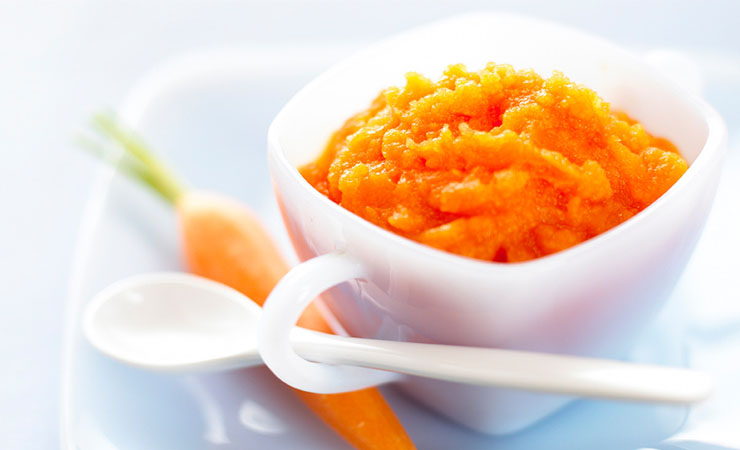
Carrots are the next best thing in line for both babies and mothers. Carrots are loaded with vitamins and minerals that strengthen baby’s immunity and also sharpen its eyesight and learning skills. But one has to take care of the fact that either you are using organic carrots to prepare organic baby food, or that you do not at any chance reuse the water used to cook carrots in. This way they will contain a large amount of nitrates in it and can cause harmful effects on the child.
Technique
- For carrot you can peel and slice as much of the carrot you feel is required.
- In case of carrots you are not to add them to water and boil inside a saucepan, rather the key to cook carrot as a baby food is to steam them.
- So add the carrots in to a steamer and water at the bottom and allow them to soften and cook.
- Once carrots have softened enough and are cooked thoroughly, mash them up or you can even extract semi cooked carrots and add them to a blender to puree them.
- After cooling to room temperature, feed the waiting baby. You can also freeze and re-use pureed carrots up to 3 months.
14. Butternut Squash
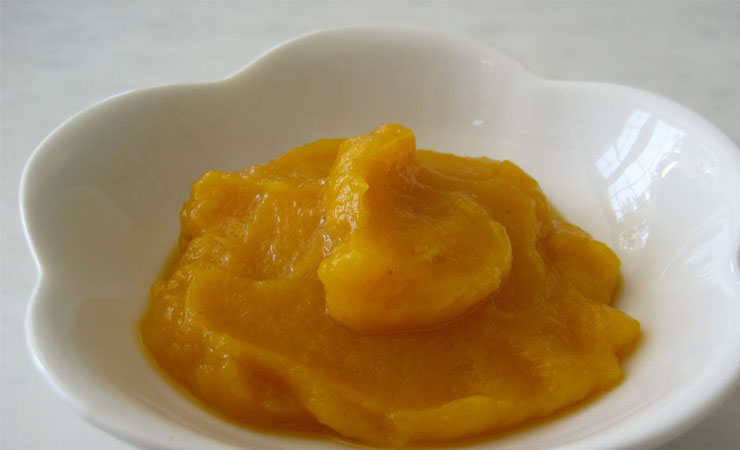
One of the substances that pediatricians often recommend to new mothers is butternut squash. Not only is it easily prepared but it also a safer bet as it is often reported to be free from allergies and gases. Many people recommend saving up from spending on baby food as homemade baby food is not only cheaper, but is also safer since, it is free from preservatives that are added to increase shelf life.
Technique
- Butternut squash requires baking and hence you are to cut the squash vertically into equal halves and place them upside down on the baking dish (glass).
- Some experts also suggest adding a little amount of water on the dish to prevent any stickiness.
- Bake the squash for about 45 minutes in a pre heated oven at 375° C.
- Take out from oven and use a spoon to scoop out the softened squash. There might be seeds in the extract so carefully remove the seeds and then add the squash into the blender to convert it into a smooth paste like puree.
- Can be freezed, for further use.
13. Peach Puree
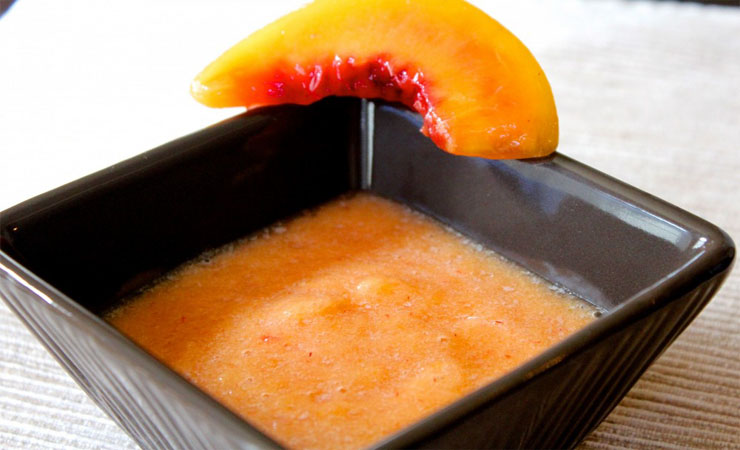
The first stage is all about pureed fruits and vegetables and single ingredient only. You are recommended to not merge and feed any fruits and vegetables until the baby reaches stage 2 (6-8 months). Also it is important to provide a gap of about 4 days when trying new foods so that way it is easier to identify and pick up on any food allergies that might have appeared, in the mean time. Peaches are not only a great food for adults but are also a cheerful creation for babies. Peaches are full of antioxidants that helps flush any tiny toxic developments within the baby.
Technique
- The first and foremost important it is to neatly peel off skin from the fruit and cut them into small pieces.
- Then add in appropriate amount of water in the pot and place the steamer on top it. Add the sliced peaches on the steamer.
- It takes an average of 15 minutes to soften the peaches. But often bigger chunks or firm peaches take a little while longer.
- Remove the peaches from the steamer and then add them into a blender and blend to form a smooth paste/puree.
- Serve the baby with the food as it reaches room temperature.
- You can also freeze it in an ice tray for future use.
12. Pea Puree

We know this sounds kind of odd to be a baby food, but it is actually really healthy and good for the baby’s health. Even adults know how important the greens are; therefore the same applies for the babies as well. The greens are an essential source of iron and include a handful of other minerals that enrich the baby’s bodies with goodness. One thing to make sure is that the puree created from peas should be really smooth and free from any kind of lumps or smaller uncooked peas.
Technique
- You can use either fresh peas of organic frozen peas to make this homemade baby food.
- The next is to slightly boil the peas, but the cooking time will be increased if you are using fresh peas.
- Once boiled for over 2 minutes, transfer the peas to a blender or a food processor and add a very slight amount of water to it. Blend well to form a smooth puree.
- The puree will not be as smooth as one might think of, as peas are covered with skin that give away a brittle texture.
- Refrigerate in an air tight container and use for up to 3 days or freeze in ice cube tray and use to up to 3 months.
11. Apple Puree

An apple a day keeps the doctor away, this isn’t all true for adults only. With apple incorporated into baby’s diet we are making sure that their iron levels are ok and that the early use of fruits and vegetables help strengthen their immunity and brain activities. The basic thing to take care of while buying supplies from the market is that you should always, always wash them thoroughly before making homemade baby food. Even if you’re planning to make organic baby food the drill should be the same because you don’t know what’s on the surface.
Technique
- Take as many apples as you wish keeping in mind your usage.
- Peel the desired apples and extract the core.
- Dice or slice the apples and add them into the pot. Shyly cover the apple with water and cook them on law flame.
- As you see that the apples have softened, extract the apples using a straining spoon and put them in a blender.
- It is upon your preference If you wish to keep the apple texture a little chunkier then don’t blend it that much, for smooth puree add in a small amount of water to make it more paste like.
10. Brown Rice Cereal

Now this sound more like for a savory minded baby. This is true, some babies like sweet flavored foods more in comparison to savory and this at times because quite disturbing and problematic. For such babies fruits and vegetables are good, but when it comes to add in foods like oats, rice, proteins and stuff they don’t want to accept it happily and the tantrums begin.
Technique
- The initial step is to finely ground the rice in either a mill or a grinder.
- Next is, you can store the ground rice in an air tight jar and refrigerate it for later use.
- To begin preparing the meal, boil half a cup of water and add in at least 2 tablespoons of ground brown rice.
- Keep on stirring the rice for 30 seconds on high heat.
- Later on reduce the heat and further cook the rice for 4-5 minutes. Keep on stirring time after time to avoid any form of lump formation.
- Additional seasonings can be added or the dish can be improvised by using either breast milk, almond milk instead of water and adding a half banana to develop a taste. Salt or some spices can also be tested at this stage.
“It is all in a mother’s affection that a child always finds comfort in its mother’s lap even if she scolds them for doing something wrong.”
Stage Two
This stage comes after the 6 month mark when babies can be fed with a little chunkier food. Babies have developed their initial two teeth by now and they are able to start chewing their food. Hence, the burden is now lessened and mothers can also feed their kids on the go or in a rush. This doesn’t mean that mothers are allowed to feed children any and everything. Still a lot of care is required to maintain a good and healthy diet.
9. Mashed Avocados

Avocados are a rich source of good fats therefore; they are not only good for nurturing the fat factors inside the baby’s body. They are richer in Potassium in comparison to bananas where not many people know what benefits Potassium holds, we would like to enlighten you ladies that Potassium helps in the electrical elements within cells and the rest of the body, keeping the spark alive (literally).
Technique
- The simplest way is to cut the avocado into half.
- Remove the seed
- Extract the pulp and mash it up using the back of a fork.
- One can also add in additional spices to develop a taste.
8. Bananas
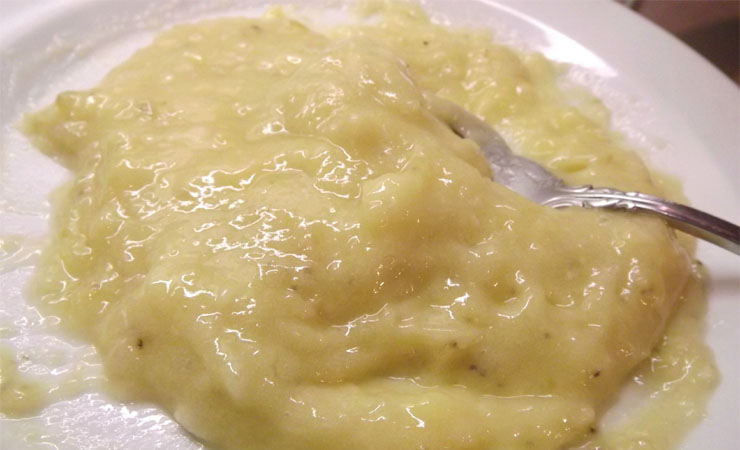
Bananas are to babies as to they are to Minions. Kids simply love bananas. As if God had sent them to Earth for the sole purpose to have bananas day and night. Bananas are also rich in potassium and iron and are often regarded as good for the stomach ailments.
Technique
- The key is to look out for good and juicy ripe bananas.
- Peel the skin and take out the pulpy banana, start mashing it up with the back of the fork.
- The size of the mashed chunks can be adjusted according to your preference.
- Still bigger and un-mashed chunks are not at all preferred or suggested.
7. White Peach And Banana Puree

This is the stage where you can experiment with as many combinations as you like, keeping in mind that they are actually edible in taste and aroma. Do not experiment like a wild chef because kids have a very limited domain in terms of flavors and tasting. More often a combination of one or two fruits or vegetables does the trick.
Technique
- You will need a white peach and a banana.
- This recipe doesn’t require any cooking but make sure that you choose ripe fruits but, make sure that they are not rotten.
- Add in the fruits diced and sliced into the blender and blend it to form a smooth puree.
- Serve to a happy and giggling baby.
6. Green Beans, Kale And Potato Puree
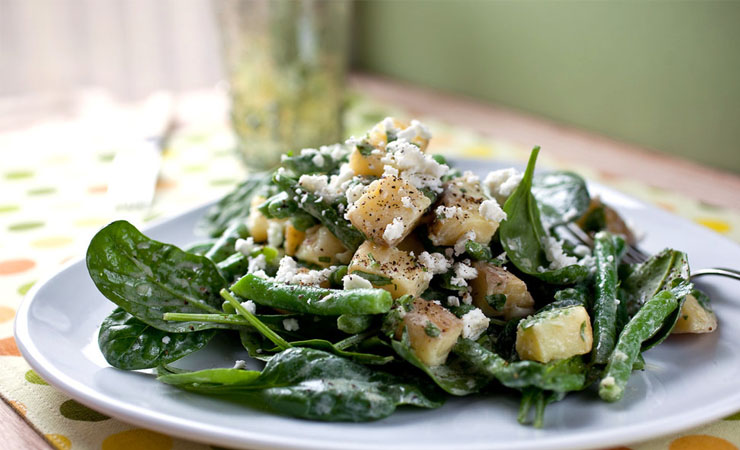
This is the first time we are mixing the vegetables together in a recipe, so this would be a first timer for the baby. We are also adding greens for the iron levels of the body. Potato is added for not just the food benefit but also to kill the bitter taste of the greens, if any.
Technique
- A sweet potato peeled and diced properly, beans and kale to be washed thoroughly, alongside.
- The process is to boil and cook the ingredients together till the potatoes and beans are soft and tender.
- Finally add the now cooked ingredients into the blender and blend to required consistency.
“A baby is not only a small human being and is your reflection in many ways, but is certainly having a personality of its own right from the very beginning.”
5. Pear Apple Butter Puree
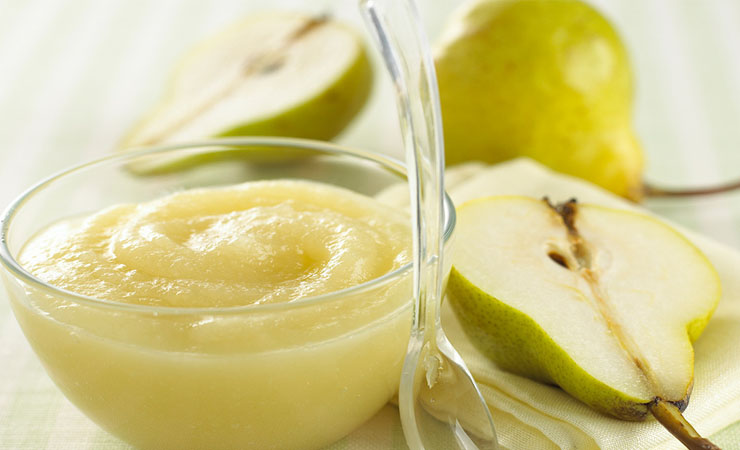
This recipe already sounds so yummy that I don’t know what to do about it. Apples, pears are tingling the sweet tooth and that this recipe also has a lot of other things is making it one of my favorite homemade baby food recipes.
Technique
- Choose firm and ripe pears for the recipe.
- For the apples, peel and slice the apples and place them inside the steamer. Steam the apples for a good 3-5 minutes.
- Next step is to add the steamed apples, pears and a dash of cinnamon in to the blender and blend all the ingredients well.
- In case, you can’t find ripe and firm pears, you can peel and slice them and steam them alongside apples.
4. Raw Berries, Avocado And Mango Puree
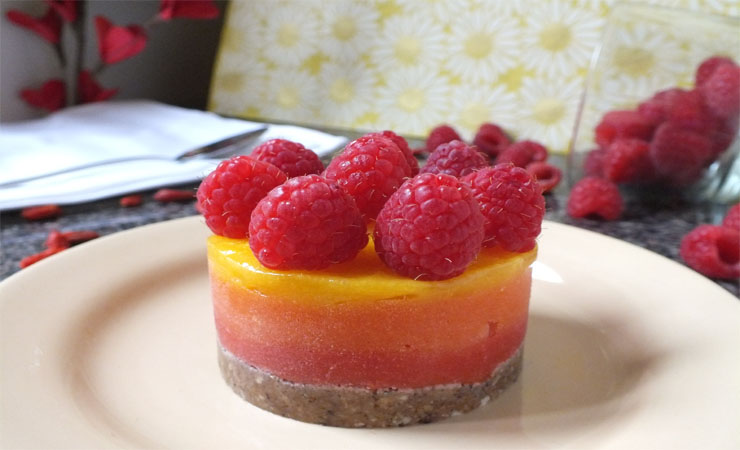
This one definitely sounds like the odd one out and looks a bit disturbing because of the texture of the puree but taste wise this sounds not only yum but must taste heavenly due to the presence of the kind of the fruits, mangoes. Mangoes automatically make any fruit bowl and meal surprisingly tempting.
Technique
- You will be needing ½ cup of organic blueberries, a thick chunk of mango peeled and sliced and 1/4th
- This recipe since belongs to stage 2 of the baby food plan you can either mash all the ingredients together or you can also put them in a blender and blend it away.
- Carefully feed the puree to the baby avoiding any hard seeds.
3. Beets And Blueberry Mash/Puree
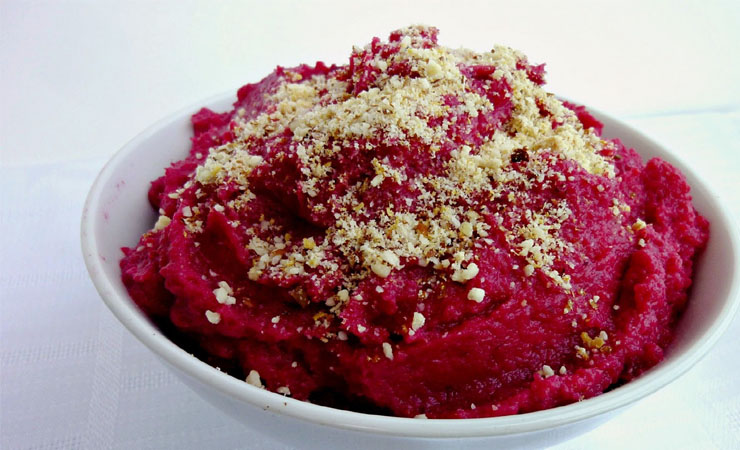
As far as we are going down the row we love the recipes even more. Since berries are added into the realm of baby food this is making the food tempting to me, as an adult. This particular recipe is a blueberry and beetroot mash that looks like a tomato paste an taste sweet.
Technique
- Pick up organic beets from the market and don’t forget to wash them properly, peel them and slice them
- You can use frozen berries for this purpose.
- You are supposed to cook the beets and the berries together in a pan with just a shy amount of water to dip the ingredients.
- Cook the ingredients for 10-15 minutes on high heat.
- The final step is the same for all, blending the mixture well to form a paste.
2. Apple And Oats Porridge

Kids love apples and bananas and these two are the fruits that are readily available within the house and don’t extra efforts to make either. Oats is another great way to make the meal filling as well as nutritious for the baby. This is a great recipe incorporating the sweetness o apples with the fulfillment of oats.
Technique
- It is easier to use quick oats and for the recipe you have to grind the oats to a powdered form.
- The apples are to be steamed and the oats and apples are then to be cooked together in a small amount of water.
- Soft apples and about 2 tablespoon of oats with a very minimum of water is required for the puree.
- However, the amount of water can be increased in order to form the right consistency for the puree.
- Serve at room temperature.
1. Basil And Ginger Infused Peach Compote
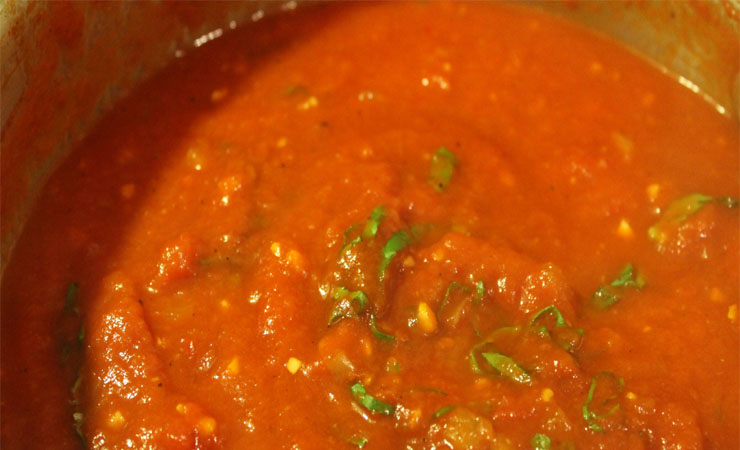
Now compote is of a slightly different consistency then a puree and is usually considered to be a lot chunkier and textured than a puree. This recipe has three core ingredients that really develop a strong aroma as well as taste. This helps the baby to get used to different kinds of strong flavors from the very beginning. The idea is to keep these flavors in the compote, comparatively smaller in quantity.
Technique
- You can use the same ground oats formula or you can crush the oats slightly by putting them inside a cloth and crushing with a heavy wooden spoon. This process breaks the oats down, further.
- The next part is the se of a 1/2 teaspoon of ginger paste and a squish of lemon.
- You need to cook 2-3 tablespoons of crushed oats and ripe peaches (skinned) in a saucepan.
- After 3-4 minutes of cooking oats and peaches, add the ginger and basil along with the squish of lemon juice to the mixture.
- Add a very small amount of water to the mixture and bring to a boil.
- Let the mixture simmer for a while and remove once firmed giving away a fresh aroma.
Remember
- There’s a tip that kids who often suffer from constipation should be given pureed high fiber foods like prunes, apples, avocado and even apricots.
- The pea puree recipe mentioned above can also be used as a core ingredient in making adult quesadillas.
- Always make sure to look after any signs of food allergies in kids once the solid food stage begins.
- Stage 2 is easier to handle but still a lot of care is needed while feeding the child and also you should restrain from forcefully feeding the child. Often times, baby’s stomach has not yet digested completely and you are forcing for the second meal.

